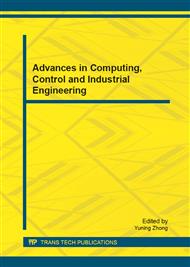p.96
p.101
p.107
p.111
p.119
p.124
p.129
p.135
p.141
Asymptotic Properties of Neutral Stochastic Functional Differential Equations with Infinite Delay
Abstract:
This paper considers the existence and uniqueness of solution to neutral stochastic functional differential equation with infinite delay with local Lipschitz condition but neither the linear growth condition. And we discuss the asymptotic properties of this solution including moment boundedness and the almost sure stability. The stability is more general and representative than the exponential stability. This investigation uses a specific Lyapunov function based on usual methods. To illustrate our idea more carefully, we introduce a function, which will be used as the decay function. A One-dimension nonlinear example is discussed to illustrate the theory.
Info:
Periodical:
Pages:
119-123
Citation:
Online since:
November 2012
Authors:
Price:
Сopyright:
© 2012 Trans Tech Publications Ltd. All Rights Reserved
Share:
Citation:


